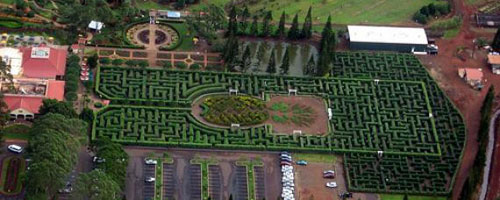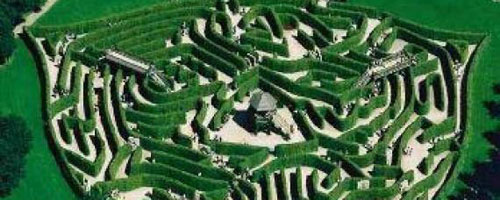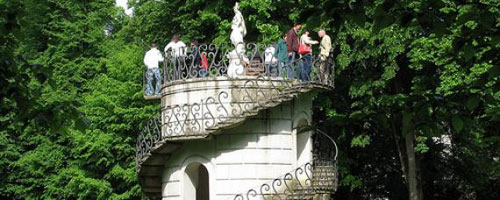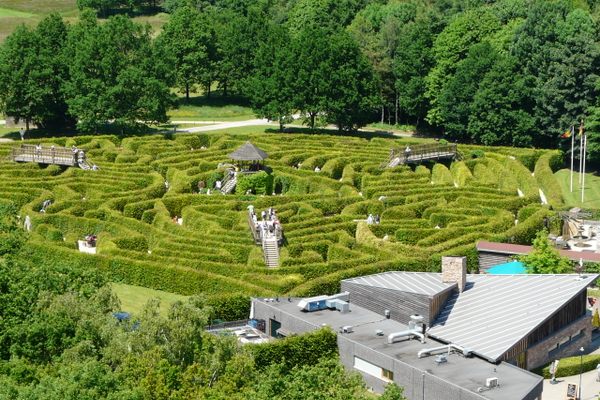Atlas Spotlight: 5 Noteworthy Mazes and Labyrinths
Crafted out of tropical plants, carved out of rock, or sculpted out of hedges, these elaborate mazes are noteworthy for their size, location, and their fascinating histories.

Dole Pineapple Maze: Wahiawa, Hawaii
The Dole Pineapple Plantation on the island of Oahu began as a humble fruit stand in 1950. Today it is a sprawling tourist attraction that draws over one million visitors a year with attractions like the Pineapple Express railway and the world’s largest plant maze, which stretches over 3 acres and was given the title by the Guinness Book of World Records in 2008. With two and half miles of trails composed of 14,000 Hawaiian plants, it takes the average person an hour to reach the pineapple-shaped center.

Ashcombe Maze: Victoria, Australia
While other labyrinths and mazes score points for their difficulty or sprawling size, the most impressive part of Australia’s Ashcombe Maze is its height: the hedges that frame the geometric trails are nine feet high and six feet wide. Trimmed three times a year to maintain their friendly-looking rounded shape, these massive hedges are also home to the popular “Great Gnome Hunt,” which gives visitors the chance to track down as many garden gnomes as they can find hidden in the maze.

Labyrinthos Caves: Crete, Greece
Not only is this elaborate labyrinth carved underground beneath a rock quarry, archaeologists consider it a prime candidate to be mythology’s most famous maze: the one King Minos constructed to house the Minotaur. Located just 20 miles from the former palace at Knossos, the Labyrinthos Caves contain more than two and a half miles of tunnels and rooms. We might never be able to know if this was really King Minos’ labyrinth, or what the Minotaur actually was (if it was indeed based on a real man or beast), but throughout history humans have found other uses for these twisting tunnels: Louis XVI sent spies to the caves, and the Nazis dumped ammunition here during the Second World War.

Labyrint Drielandenpunt: Vaals, Netherlands
This gorgeous labyrinth holds numerous records: it is the largest outdoor shrub maze in Europe, crafted from 17,000 hornbeam shrubs. It is also the highest and southernmost point in the Netherlands. Most importantly, though, this grand labyrinth was erected at the place where the Netherlands, Belgium and Germany meet. Visitors who complete the maze can stand on a platform in the center and gaze out into 3 beautiful countries at once, in addition to yelling instructions to those lost in the twists and turns of shrubbery.

Villa Pisani Labirinto: Stra, Italy
Would you like to attempt a maze so difficult it was said to have stumped Napoleon? The Labyrinth at the Villa Pisani in Stra, Italy was designed by Girolamo Frigimelica in 1720 with plenty of frustrating dead ends and hedges so high, it’s impossible to know where you are. The Villa Pisani–a grand 114 room estate complete with 30 acres of gardens, a reflecting pool, an orangery, and of course the labyrinth–was seized by Napoleon in 1807. During his stay there, legend has it the little corporal got lost in the high hedges. In 1934, Hitler and Mussolini met at the villa for talks, but weren’t feeling brave enough to take a spin through the labyrinth.






Follow us on Twitter to get the latest on the world's hidden wonders.
Like us on Facebook to get the latest on the world's hidden wonders.
Follow us on Twitter Like us on Facebook